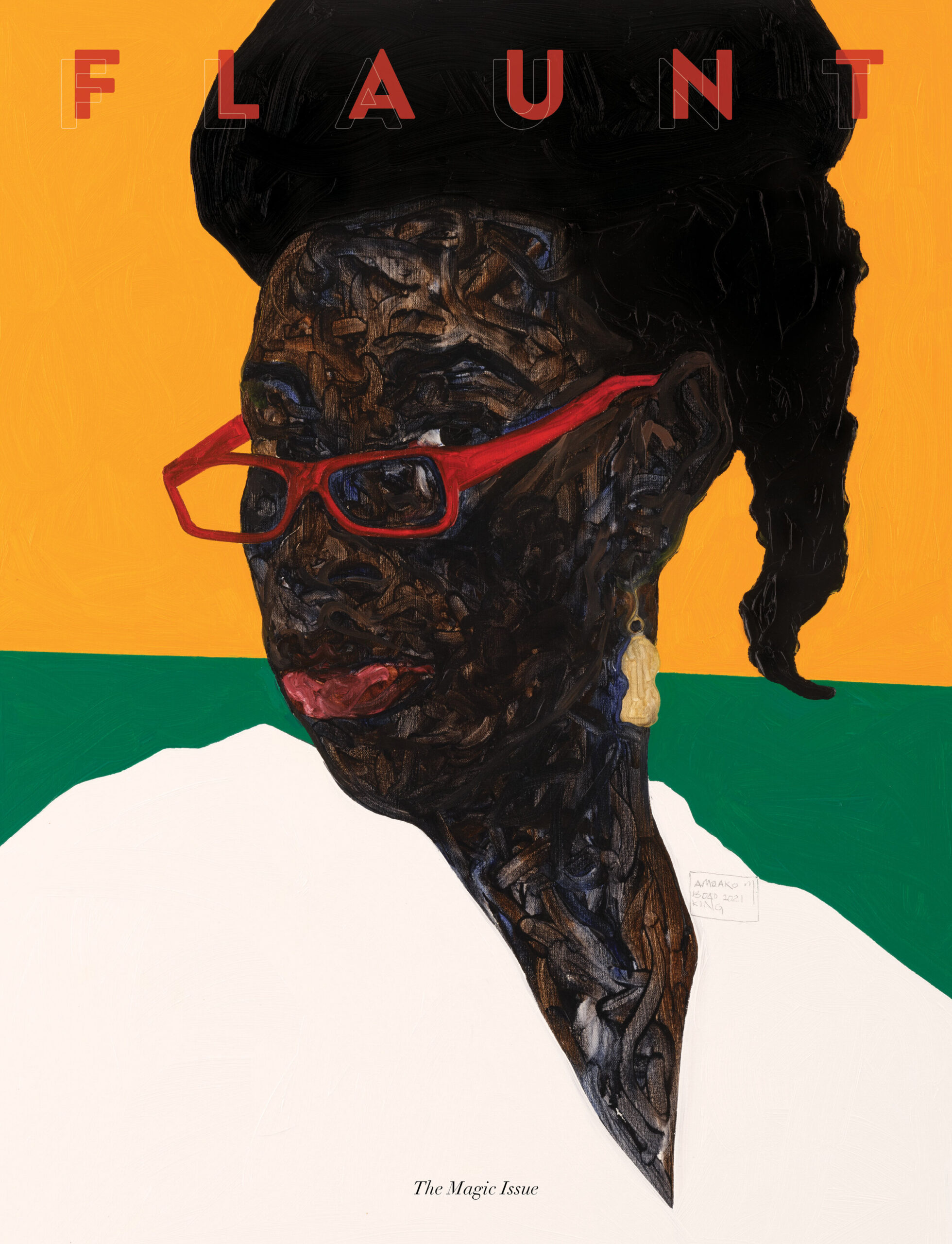Amoako Boafo. “RED FRAMES” (2021). Oil on canvas. 40” x 30”. ©Thomas Amoako Boafo, 2021. Courtesy of the artist and Roberts Projects, Los Angeles, CA; Photo Alan Shaffer.
After I leave Amoako Boafo’s studio in Los Angeles, I can’t get James Baldwin out of my mind. Actually, it is Baldwin and Beauford Delaney, their tête-à-tête on that street corner in Greenwich. If I take liberties with Baldwin’s words, the oil water—an apposition—constitutes a different type of operation of seeing, of viewing, one that gestures towards poet Fred Moten, who began his thoughts in the essay “Visible Music” with this curbside remembrance from Baldwin. We want the painting—and/or painter—to sing, to indulge what Moten considers our “rituals of renomination” by invoking this internal rhythm of art(work) that doesn’t always play for us—on command—and shouldn’t. When we want it to play, it works. And when we want work, it plays.
This attempt at, and resistance of containment, on the part of art and artist could be summed up in Boafo’s predicates: “I paint so I don’t have to explain my work, my life.” His utterance recalls Joan Didion’s varied thoughts on magic: we find enchantment in working and not by analyzing contents or the very act of working. This is a script that Boafo—who opens his second solo at Roberts Projects this September, SINGULAR DUALITY: ME CAN MAKE WE—is familiar with. His ethos to language seeks to undo the words, the script, almost as if fearful of what the definitive, last word might herald. Some might wager that we find magic—the occult—in the meta-voice of the artist, which is to say whether Boafo summons the voice of his paintings through explication. In my head, I ask: What does this movement of paint mean here, and here, or there?

